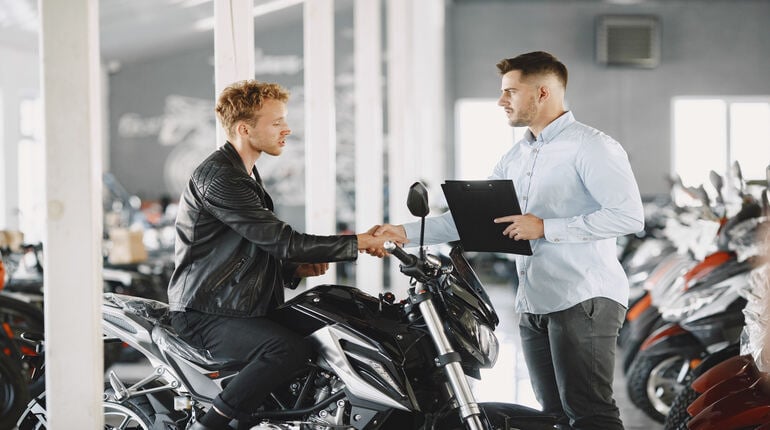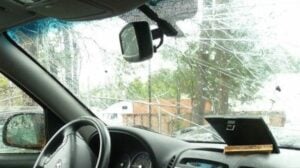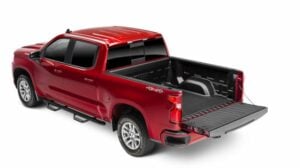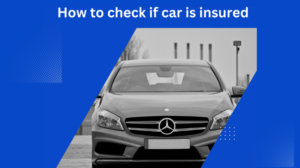When purchasing a used motorcycle, it’s important to keep your eyes open and your mind on high alert at all times. Even the best-intentioned sellers can sometimes miss key details about their bike that, if missed by you, could mean thousands of dollars in repairs down the line. When you say motorcycle check, there could be several aspects you might want to consider. This used motorcycle checklist will help you ask the right questions and protect yourself from buying an expensive mistake!
Is it essential to do research when buying a used motorcycle?
Buying a used motorcycle is essential to do your research and take certain precautions to ensure you make a smart purchase. Here are some tips to help you when buying a used motorcycle:
Research the model: Begin by researching the specific make and model of the motorcycle you’re interested in. Look for reviews, common issues, and the average price range for that particular bike.
Determine your budget: Set a clear budget for your purchase, including not just the cost of the motorcycle but also any potential additional expenses like insurance, registration, and maintenance.
Inspect the motorcycle in person: Always see the motorcycle in person before making any commitments. If possible, take along a friend who is knowledgeable about motorcycles or have a mechanic inspect it for you.
Check the motorcycle’s history: Obtain the motorcycle’s Vehicle Identification Number and use it to get a vehicle history report. These reports can reveal important information about the bike, such as past accidents, title status, and maintenance history.
Look for signs of damage or wear: Thoroughly inspect the motorcycle for signs of damage or excessive wear. Check the frame, tires, brakes, suspension, and engine for any visible issues.
Ask about maintenance records: Request the motorcycle’s maintenance records to see if it has been well taken care of. Regular maintenance indicates that the previous owner(s) cared for the bike properly.
Test ride the motorcycle: If the seller allows it and you have a valid motorcycle license, take the bike for a test ride. Pay attention to how it handles, accelerates, and brakes.
Verify legal documents: Ensure that the seller has all the necessary paperwork, including the title and registration, and that they match the motorcycle’s details.
Negotiate the price: Don’t be afraid to negotiate the price if you believe it’s fair based on the bike’s condition and market value. Be polite but assertive in your negotiations.
Avoid buying sight unseen: It’s generally risky to buy a motorcycle without seeing it in person or through an unverified online listing. Scams and misrepresented bikes are more common in such cases.
Check for outstanding finance: Confirm that there is no outstanding finance on the motorcycle before finalizing the purchase. Otherwise, you might end up responsible for someone else’s debt.
Consider the Season: Motorcycle prices may fluctuate based on the time of year. In some regions, prices might be higher during the riding season and lower during the off-season.
Buy from reputable sellers: Purchase from reputable sources like established dealerships or private sellers with a good reputation. Avoid deals that seem too good to be true, as they might come with hidden issues.
Compare prices: Compare the prices of similar models in your area to ensure you’re getting a fair deal.
Trust your instincts: If you notice anything odd or suspicious while the buying process, trust your instincts and consider looking elsewhere.
By following these tips and doing your due diligence, you increase the likelihood of finding a used motorcycle that suits your needs and offers good value for your money. Remember, patience and thoroughness are essential when making any significant purchase. Happy hunting!
Check the outer and inner appearance manually
The first thing you want to do when buying a used motorcycle has inspected the bike from the outside. This includes checking for scratches or signs of rust on the frame, as well as looking at the tires and wheels. Next, check all of your lights, mirrors, turn signals, and horn. If the seller has a key, turn it over in the lock to make sure that it turns freely. Also, make sure you have an idea of how much fuel is left before you purchase it.
Check the MOT service records
it’s always best to ask if the bike has been checked by a qualified mechanic and whether or not it’s come back with any faults. If the owner doesn’t want to show you the paperwork, then they may have something to hide. MOT service records will show that all major parts of your bike have been looked at and deemed safe.
Checking these is also a good idea as sometimes there are things that need replacing but won’t be apparent until they’ve had an MOT test- like brake pads for example!
Check the documents with the seller
It’s most important to check the owner’s documents. Does the owner have all of their paperwork? How many miles does it say on the odometer? The more paperwork and fewer miles, the less likely that person is trying to scam you. So, check out the V5C documents. Also, make sure the bike has been serviced within the past year.
Check the current market price for the model you are looking for
First, check the current market price for the model you are looking for. There are a variety of websites that will let you know what a particular bike is worth. You can also bring in an expert who specializes in motorcycles and they’ll be able to give you an accurate assessment of the value. Once you have checked the value, do your research on how much it would cost to buy a similar motorcycle. The difference between the two numbers will tell you whether or not it’s worth it to make this purchase at this time.
Electrical Checks
If you’ve got a multimeter, check the battery terminals for corrosion and make sure there are no loose connections. Start the engine and listen for anything that sounds out of place. Finally, if the bike is more than five years old, ask if you can run a diagnostic test on it with an OBD reader. The seller should be able to provide the needed information. If they don’t, walk away.
Just because a motorcycle has some damage doesn’t mean it’s automatically worthless or overpriced – you need to weigh up whether the flaws are worth bearing in mind or not when making your decision.
Check the tyres
When you’re buying a used motorcycle, you should check the tyres. They will show you how well the bike has been maintained. A previous owner may have taken good care of the bike, but they may have also neglected it in other ways, so the tyres are one of many things to consider when looking at a bike. You can tell if a tyre is worn by looking for signs of cracking and bubbles on the surface.
It’s always worth taking a test ride before you buy a motorcycle. It’ll give you an idea of the bike’s power, handling, and brakes. You can also take note of any rattles or other noises that might indicate a problem with the bike. Ask the seller about how often it’s ridden and how many miles it has on it.
Ask The Owner Some Questions Before Viewing
• Is there any damage or accidents that the vehicle involved?
• Why you are selling the bike?
• How long have you owned the bike?
• Is there anything you need to know before viewing the bike?
Answering your questions
How can I verify the status of my motorcycle’s MOT and tax?
To find the motorcycle’s DVLA-provided MOT history. Detailed information concerning MOT failures, cautions, and warnings will be displayed in our reports. On the Askmid website, you can also view the bike’s insurance status.
What information does a motorcycle check provide?
A motorcycle check typically provides details about the motorcycle’s registration, ownership history, mileage data, MOT history, outstanding finance, insurance write-off status, and any reported accidents or thefts.






